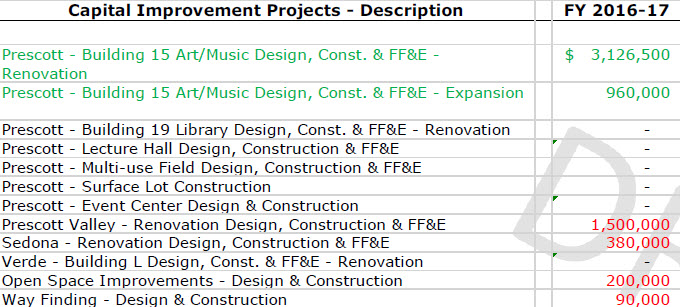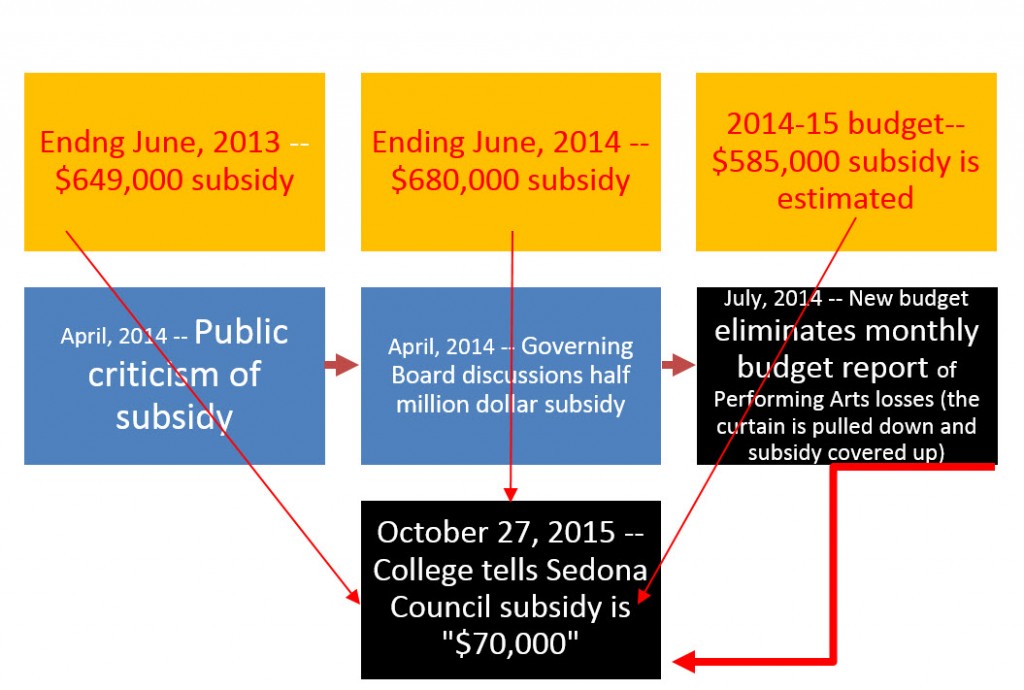College has $23 million in reserves; didn’t spend over $2 million in general fund money
The year-end report given to the District Governing Board at the August 9, 2016 meeting confirmed the College ended the year with huge reserves and excess general revenue. According to the data furnished the Board, the College had $11.457 million in the Plant Fund Reserve fund; $12 million in the Educational and General and Auxiliary Fund reserve), and $2 million in unspent revenue in the General Fund budget.
Following below are the graphs produced by the College showing the reserve amounts and the statement regarding the net revenue surplus issued by the College.



 The College Administration will report excess revenue in the General Fund Budget of $2,208,713. It will also report revenue in the Unexpended Plant Fund in excess of $2,770,000. Finally, it will report excess revenue in the Auxiliary budget of $123,621.
The College Administration will report excess revenue in the General Fund Budget of $2,208,713. It will also report revenue in the Unexpended Plant Fund in excess of $2,770,000. Finally, it will report excess revenue in the Auxiliary budget of $123,621.







 The article made the following points:
The article made the following points:








